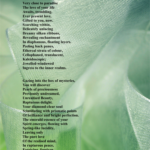It’s been a busy few weeks getting this edition of ReSource off to print, and there are some really great interviews and articles which I’ve really enjoyed preparing.
I also relished designing the fresh summer cover –
Some snippets
‘Generation Y’ has featured strongly, it wasn’t an intentional thing, simply that it was topical amongst the people I was speaking to.
Generalisation about any group is not ideal, and can be dangerous, and we acknowlede that there are always exceptions, yet Don Tapscott, Marshall Goldsmith, Kate Sweetman and Marcus Buckingham are all talking about the differences between this group of 16 – 31 year olds and the ‘boomers’ – the message is that they are flexible, value-driven and aren’t impressed by materialism in the way previous generations have been – they won’t compromise their ideals.
Kate Sweetman talks about the fact that Gen Y ‘s values, needs and wants are very similar to those that women have traditionally upheld –
“I predict that companies that can solve the C-level gender gap will also win the Talent war for the best and the brightest in Gen Y. What women have always wanted and what Gen Y demands are virtually the same things.”
Don Tapscott advocates listening to young people and acting on their input. He says of the Net Generation:
“they are the first ever global generation, and they are defined by these eight norms. If you are designing a company, a brand, a marketing programme, or a government, it doesn’t matter what it is, these eight norms need to be at the centre of it.”
Marcus Buckingham (in London next week – check out his June 10 event here – ReSource will be there as a media partner) noted:
“All the research that I have seen shows that Gen Y is a ‘volunteerist’ generation, and an optimistic generation, but they are clueless about what it takes to perform”
Marshall Goldmsith has some great advice:
“For young people, my advice is that the world you are growing up in is a much more competitive world than the world I grew up in. Make sure you love what you do, or you are going to be living in what I call ‘New Age Professional Hell’“.
These are just a selection from the host of valuable, great articles covering a range of topics from business leadership and personal success to spirituality and well-being – check out www.resourcemagazine.co.uk and subscribe so you don’t miss out on a truly great ReSource!








